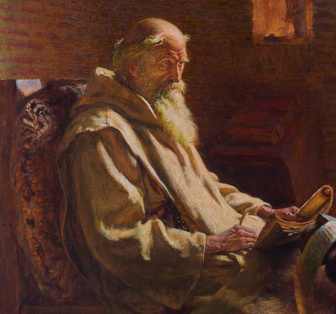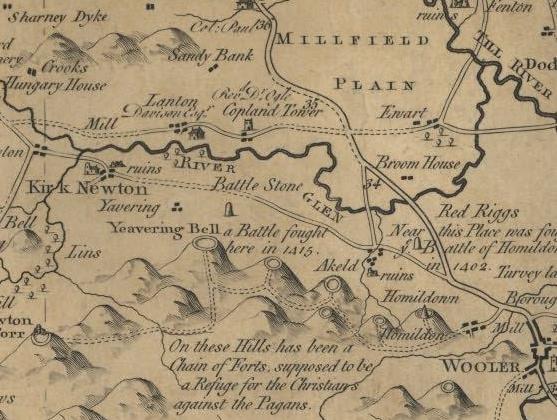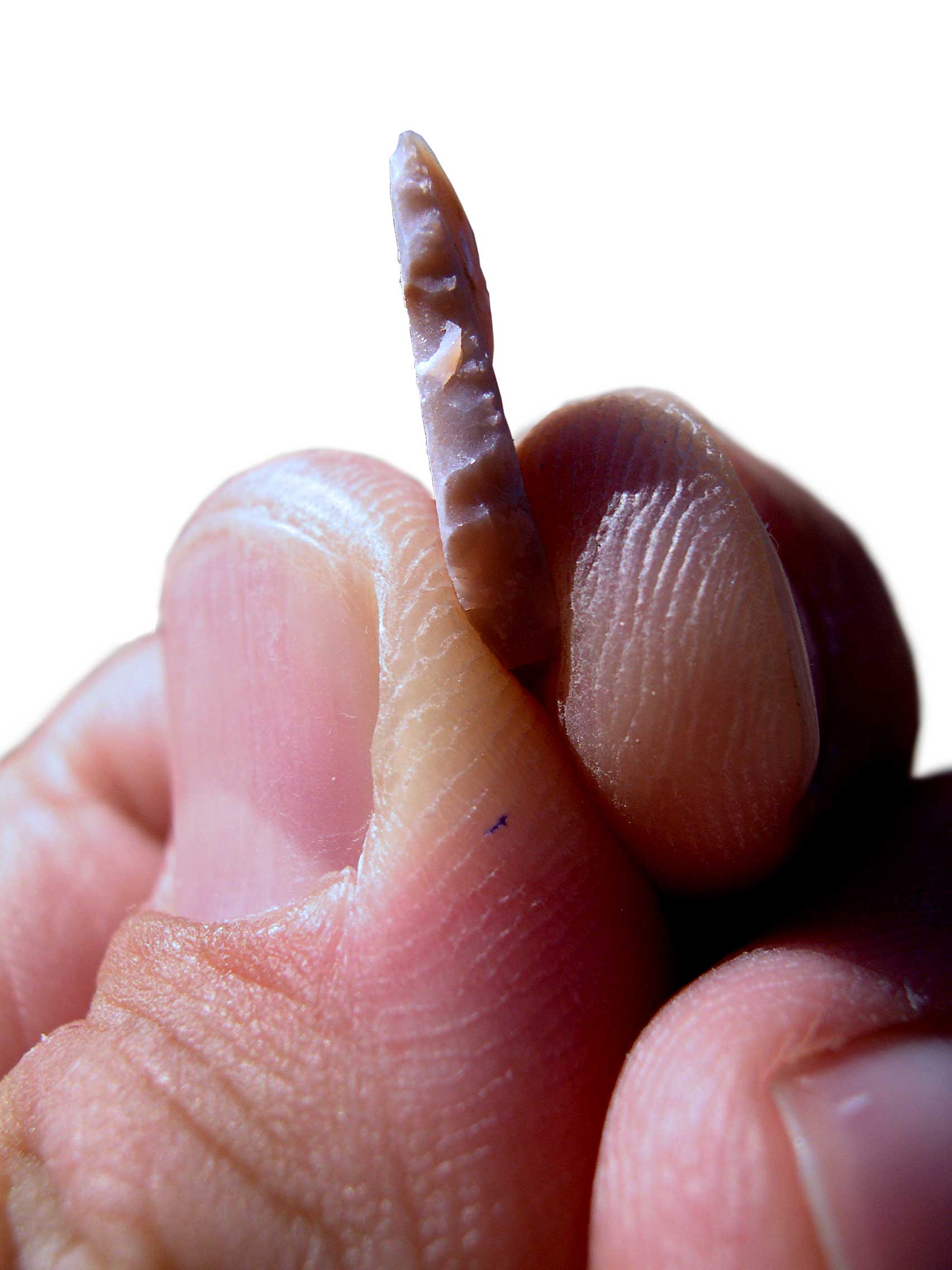|
Yeavering
Yeavering () is a hamlet in the north-east corner of the civil parish of Kirknewton in the English county of Northumberland. It is located on the River Glen at the northern edge of the Cheviot Hills. It is noteworthy as the site of a large Anglo-Saxon period settlement that archaeologists have interpreted as being one of the seats of royal power held by the kings of Bernicia in the 7th century AD. Evidence for human activity in the vicinity has been found from the Mesolithic, Neolithic and Bronze Age periods, although it would be in the Iron Age that significant settlement first occurred at Yeavering. In this period, a heavily inhabited hillfort was constructed on Yeavering Bell which appears to have been a major settlement centre at the time. According to Book 2 Chapter 14 of the ''Ecclesiastical History'' of the Venerable Bede (673–735), in the year 627 Bishop Paulinus of York accompanied the Northumbrian king Edwin and his queen Æthelburg to their royal vill (the Lati ... [...More Info...] [...Related Items...] OR: [Wikipedia] [Google] [Baidu] |
Yeavering Bell
Yeavering Bell is a twin-peaked hill near the River Glen in north Northumberland, England, to the west of Wooler, and forming part of the Cheviot Hills. The summit, above sea level, is encircled by the wall of a late-prehistoric hillfort, a tribal centre of the Votadini called in Brythonic and Old Welsh Din Gefron, from which the name stems (Old English Old English ( or , or ), or Anglo-Saxon, is the earliest recorded form of the English language, spoken in England and southern and eastern Scotland in the Early Middle Ages. It developed from the languages brought to Great Britain by Anglo-S ... *geafringa-). The hillfort encloses an area of approximately and is enclosed by a stone wall, upwards of thick, having four entrances, one of which is defended by a guard-house; and within this area is an inner fort, excavated out of the rock, of an oval form, measuring across at the widest part. On the sides of the hill, and in a high valley between the Bell and the next ... [...More Info...] [...Related Items...] OR: [Wikipedia] [Google] [Baidu] |
River Glen, Northumberland
The River Glen is a seven mile long tributary of the River Till flowing through northern Northumberland, England, United Kingdom. The College Burn and Bowmont Water, both flowing out of the Cheviot Hills, meet near Kirknewton to form the River Glen. The Glen flows past the small settlements of Yeavering, Lanton, Coupland, Akeld, and Ewart, and through the valley of Glendale, before joining the Till. History The area around the Glen is rich in historical and archaeological interest. Iron Age hillforts on peaks to the south of the River overlook the Anglo-Saxon settlement and palace site at Yeavering, where St. Paulinus baptised new converts and, according to St. Bede, "washed them with the water of absolution in the river Glen, which is close by" (Tomlinson, 1888, p. 504). The vicinity of the Glen was the setting for some of the bloodiest border warfare between Scotland and England. The Battle of Humbleton Hill was fought near the River in 1402, and so was the ... [...More Info...] [...Related Items...] OR: [Wikipedia] [Google] [Baidu] |
Edwin Of Northumbria
Edwin (; c. 586 – 12 October 632/633), also known as Eadwine or Æduinus, was the King of Deira and Bernicia – which later became known as Northumbria – from around 616 until his death. He was the second monarch to rule both of these northern English kingdoms and the first to convert to Christianity. After he died in battle, he was venerated as a saint. Edwin was the son of Ælle, the first known king of Deira, and likely had at least two siblings. His sister Acha was married to Æthelfrith, king of neighbouring Bernicia. Edwin was forced into exile when Æthelfrith conquered Deira. His travels took him to the court of Rædwald of East Anglia, who defeated Æthelfrith in 616, allowing Edwin to ascend the thrones of Bernicia and Deira. After the death of his patron Rædwald around 624, Edwin became the most powerful ruler in Britain. Bede the Venerable includes him in his list of kings who exercised imperium over other Anglo-Saxon monarchs, and the ''A ... [...More Info...] [...Related Items...] OR: [Wikipedia] [Google] [Baidu] |
Kirknewton, Northumberland
Kirknewton is a Northumbrian village in the north of the county of Northumberland, about from the town of Wooler and roughly the same distance to the Scottish Borders. The village lies in the valley of Glendale, which takes its name from the River Glen, whose source at the confluence of the Bowmont Water and the College Burn lies at the west end of the village. The population as taken at the 2011 Census was less than 100. Details are maintained in the parish of Akeld. Demography The parish of Kirknewton was one of the geographically largest in the United Kingdom, but one of the smallest in terms of population, with a count of 108 residents (56 female, 52 male) in the 2001 UK Census. Most residents live in the villages of Kirknewton, Westnewton and Hethpool, with the remainder scattered in remote farms and steadings, many of which are now holiday properties. Prior to the 2011 Census, the parish merged with neighbouring Akeld. Hethpool The name Hethpool derives fr ... [...More Info...] [...Related Items...] OR: [Wikipedia] [Google] [Baidu] |
Cheviot Hills
The Cheviot Hills (), or sometimes The Cheviots, are a range of uplands straddling the Anglo-Scottish border between Northumberland and the Scottish Borders. The English section is within the Northumberland National Park. The range includes The Cheviot (the highest hill), plus Hedgehope Hill to the east, Windy Gyle to the west, and Cushat Law and Bloodybush Edge to the south. The hills are sometimes considered a part of the Southern Uplands of Scotland as they adjoin the uplands to the north. Since the Pennine Way runs through the region, the hills are also considered a part of the northern Pennines although they are separated from the Cheviot Hills by the Tyne Gap, part of which lies within the southern extent of the Northumberland National Park. The Cheviot Hills are primarily associated with geological activity from approximately 480 to 360 million years ago, when the continents of Avalonia and Laurentia collided, resulting in extensive volcanic activity (the Caledonia ... [...More Info...] [...Related Items...] OR: [Wikipedia] [Google] [Baidu] |
Royal Vill
A royal vill, royal ''tun'' or ''villa regalis'' () was the central settlement of a rural territory in Anglo-Saxon England, which would be visited by the King and members of the royal household on regular circuits of their kingdoms. The royal vill was the centre for the administration of a subdivision of a kingdom, and the location where the subdivision would support the royal household through the provision of food rent. Royal vills have been identified as the centres of the '' regiones'' of the early Anglo-Saxon period, and of the smaller multiple estates into which ''regiones'' were gradually divided by the 8th century. The British Isles during the early Middle Ages lacked the sophisticated long-distance trade in essential foodstuffs required to support agriculturally unproductive households in a single location. Kings and their entourages could therefore only support themselves by constantly moving between territories with an obligation to support them, and they maintained net ... [...More Info...] [...Related Items...] OR: [Wikipedia] [Google] [Baidu] |
Paulinus Of York
Paulinus (died 10 October 644) was a Roman missionary and the first Bishop of York. A member of the Gregorian mission sent in 601 by Pope Gregory I to Christianize the Anglo-Saxons from their native Anglo-Saxon paganism, Paulinus arrived in England by 604 with the second missionary group. Little is known of Paulinus's activities in the following two decades. After some years spent in Kent, perhaps in 625, Paulinus was consecrated a bishop. He accompanied Æthelburg of Kent, sister of King Eadbald of Kent, on her journey to Northumbria to marry King Edwin of Northumbria, and eventually succeeded in converting Edwin to Christianity. Paulinus also converted many of Edwin's subjects and built some churches. One of the women Paulinus baptised was a future saint, Hilda of Whitby. Following Edwin's death in 633, Paulinus and Æthelburg fled Northumbria, leaving behind a member of Paulinus's clergy, James the Deacon. Paulinus returned to Kent, where he became Bishop of Rochester ... [...More Info...] [...Related Items...] OR: [Wikipedia] [Google] [Baidu] |
Northumberland
Northumberland ( ) is a ceremonial counties of England, ceremonial county in North East England, on the Anglo-Scottish border, border with Scotland. It is bordered by the North Sea to the east, Tyne and Wear and County Durham to the south, Cumbria to the west, and the Scottish Borders council area to the north. The town of Blyth, Northumberland, Blyth is the largest settlement. Northumberland is the northernmost county in England. The county has an area of and a population of 320,274, making it the least-densely populated county in England. The south-east contains the largest towns: Blyth, Northumberland, Blyth, Cramlington, Ashington, Bedlington, and Morpeth, Northumberland, Morpeth, the last of which is the administrative centre. The remainder of the county is rural, the largest towns being Berwick-upon-Tweed in the far north and Hexham in the south-west. For local government purposes Northumberland is a Unitary authorities of England, unitary authority area. The county Histo ... [...More Info...] [...Related Items...] OR: [Wikipedia] [Google] [Baidu] |
Votadini
The Votadini, also known as the ''Uotadini'', ''Wotādīni'', ''Votādīni'', or ''Otadini'' were a Celtic Britons, Brittonic people of the British Iron Age, Iron Age in Great Britain. Their territory was in what is now south-east Scotland and north-east England, extending from the Firth of Forth and around modern Stirling to the River Tyne, including at its peak what are now the Falkirk, Lothian and Scottish Borders, Borders regions and Northumberland. This area was briefly part of the Roman province of ''Roman Britain, Britannia''. The earliest known capital of the Votadini appears to have been the Traprain Law hill fort in East Lothian, until that was abandoned in the early 5th century. They afterwards moved to Din Eidyn (Edinburgh). The name is recorded as ''Votadini'' in classical sources, and as ''Otodini'' on old maps of ancient Roman Britain. Their descendants were the early medieval kingdom known in Old Welsh as ''Gododdin, Guotodin'', and in later Welsh as ''Gododdin'' ... [...More Info...] [...Related Items...] OR: [Wikipedia] [Google] [Baidu] |
Hunter-gatherer
A hunter-gatherer or forager is a human living in a community, or according to an ancestrally derived Lifestyle, lifestyle, in which most or all food is obtained by foraging, that is, by gathering food from local naturally occurring sources, especially wild edible plants but also insects, Fungus, fungi, Honey hunting, honey, Eggs as food, bird eggs, or anything safe to eat, or by hunting game (pursuing or trapping and killing Wildlife, wild animals, including Fishing, catching fish). This is a common practice among most vertebrates that are omnivores. Hunter-gatherer Society, societies stand in contrast to the more Sedentism, sedentary Agrarian society, agricultural societies, which rely mainly on cultivating crops and raising domesticated animals for food production, although the boundaries between the two ways of living are not completely distinct. Hunting and gathering was humanity's original and most enduring successful Competition (biology), competitive adaptation in the nat ... [...More Info...] [...Related Items...] OR: [Wikipedia] [Google] [Baidu] |
Microliths
A microlith is a small Rock (geology), stone tool usually made of flint or chert and typically a centimetre or so in length and half a centimetre wide. They were made by humans from around 60,000 years ago, across Europe, Africa, Asia and Australia. The microliths were used in spear points and arrowheads. Microliths are produced from either a small blade (Microblade technology, microblade) or a larger blade-like piece of flint by abrupt or truncated retouch (lithics), retouching, which leaves a very typical piece of waste, called a microburin. The microliths themselves are sufficiently worked so as to be distinguishable from workshop waste or accidents. Two families of microliths are usually defined: laminar and geometric. An assemblage of microliths can be used to date an archeological site. Laminar microliths are slightly larger, and are associated with the end of the Upper Paleolithic and the beginning of the Epipaleolithic era; geometric microliths are characteristic of the M ... [...More Info...] [...Related Items...] OR: [Wikipedia] [Google] [Baidu] |





